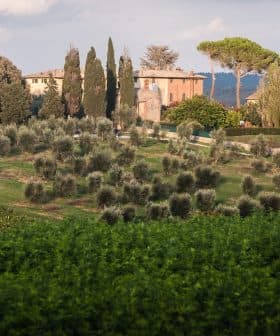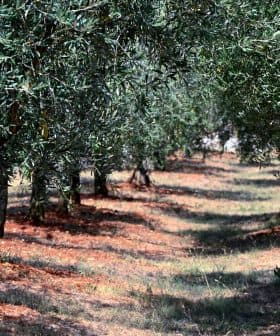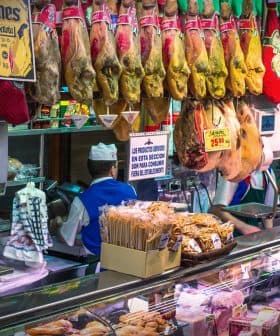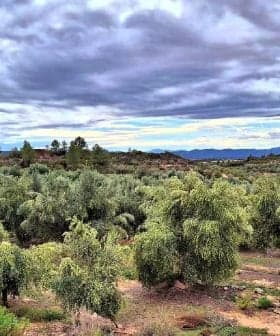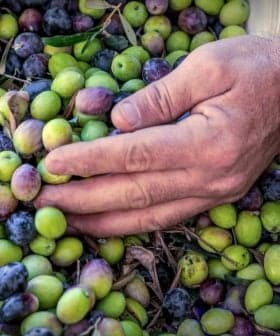Malta's 2024 Olive Yield Plummeted

Windy weather and lack of rainfall in 2024 led to a significant reduction in the olive harvest in Malta, with the country producing 37 metric tons of olive oil compared to the previous year’s 121 tons. Despite challenges, Maltese olive growers like Ramla Valley implemented strategies such as drip irrigation and soil management to protect their crops and produce high-quality olive oil.
Windy weather and a lack of rainfall throughout 2024 left Maltese olive growers facing a drastically reduced harvest.
According to partial data from the Olive Growers Cooperative, the small Mediterranean archipelago nation, home to about half a million people, produced 37 metric tons of olive oil from 227 tons of olives in the 2024/25 crop year.
The current harvest came after the bumper crop in 2023/24, which yielded 121 tons of olive oil, and is 48 percent below the average of the previous four harvests.
Since we began cultivating olive trees in 1997, we have never experienced such a low fruit yield. The primary causes were a lack of rain… extreme temperatures and other adverse weather conditions.
Growers attributed the reduced olive harvest to strong winds, an unseasonal April heatwave and insufficient rainfall.
Jimmy Magro, president of the Olive Growers Cooperative, described the past season as “terrible.” The wind destroyed blossoms, and the warm weather prevented trees from hibernating, reducing productivity.
“2024 was not only a very hot and very dry year; at the end of April, we also faced a series of spring storms that wiped out many of the blossoms,” Kurt Mifsud, the chief executive of Mediterranean Culinary Academy, confirmed to the Michelin Guide. “Those powerful winds greatly diminished the chances of pollination, which is essential for fruiting.”
See Also:2024 Harvest UpdatesRamla Valley, a family-run cottage industry producing extra virgin olive oil on Gozo, Malta’s second-largest island, is among the producers hit hardest by the harsh conditions.
“Since we began cultivating olive trees in 1997, we have never experienced such a low fruit yield,” owner George Carl Camilleri told Olive Oil Times. “The primary causes were a lack of rain, despite continued irrigation, extreme temperatures and other adverse weather conditions.”
The trees initially bloomed vigorously, but unexpected rainfall disrupted pollination just as the flowers opened. Two additional flowerings followed, both met with severe environmental challenges.
“The second bloom coincided with strong southeasterly winds, turning the skies yellowish-orange for an extended period, while humidity levels soared to 98 percent, further hindering pollination,” Camilleri said. “The third flowering took place under intense heat, causing many flowers to dry out completely.”
As a result, individual trees bore olives in three distinct stages, leading to an overall yield reduction of nearly 80 percent.
Despite the difficulties, Ramla Valley remained proactive. Continuous watering, applying Kaolin clay to reduce heat stress and installing olive fruit fly traps helped protect their remaining crop.
“Excessive temperatures kept olive flies from being a significant threat,” Camilleri said. “We also closely monitored other pests, such as the olive bark beetle and wood borers, which thrive in dry conditions, particularly in neighboring fields that lacked irrigation access.”
“Soil management also played a crucial role in mitigating damage,” he added. “By mowing grass and repurposing it as mulch, we prevented water evaporation while sustaining soil fauna and microorganisms.”
Camilleri said the harvested olives yielded high-quality extra virgin olive oil despite dramatically lower yields.
“While the weather remains beyond our control, our longstanding investment in drip irrigation systems has been invaluable,” he said. ‘Though expenses were substantial, we were well-prepared and avoided being caught off guard.”
On the main island of Malta, local olive farmer Immanuel Grima confirmed that his endemic Bidini olive grove also suffered from a low harvest.
“That’s obviously disappointing for us and other small-scale producers, as well as for top-tier Maltese restaurants that like to use our olive oil,” he said.
Indeed, Darren Mifsud, director of Diar il-Bniet, a restaurant and greengrocer that promotes local products, said he had to raise his olive oil prices from €12 per liter to €16 to €18 per liter.
However, most of Malta’s 1,000 metric tons of annual olive oil consumption comes from imports. After rebound harvests in the rest of the region, food importers Alf Mizzi & Sons anticipated lower prices for imported oils.
Despite very low production compared to nearby Tunisia or Italy, Grima said he sees potential to increase Bidini production, similarly to how Albanian producers are working to market the endemic Kalinjot variety despite the challenges faced by Maltese olive oil producers.
“The name ‘Bidni’ refers to the valley around Bidnija, some two kilometers south of St Paul’s Bay,” Grima said. “This unique Maltese cultivar has been present there since Roman times.”
“We could expand our acreage, but arable land is scarce in Malta and, due to the islands’ rapid economic expansion in recent years, its price has become exorbitantly high, increasing fivefold in a short time,” he added.
“We have observed that olive tree cultivation on small-scale farms in Malta has doubled in the last decade, which has enabled this revival to gain further momentum,” Grima concluded. “Demand for Bidni olive trees is also on the rise.”


